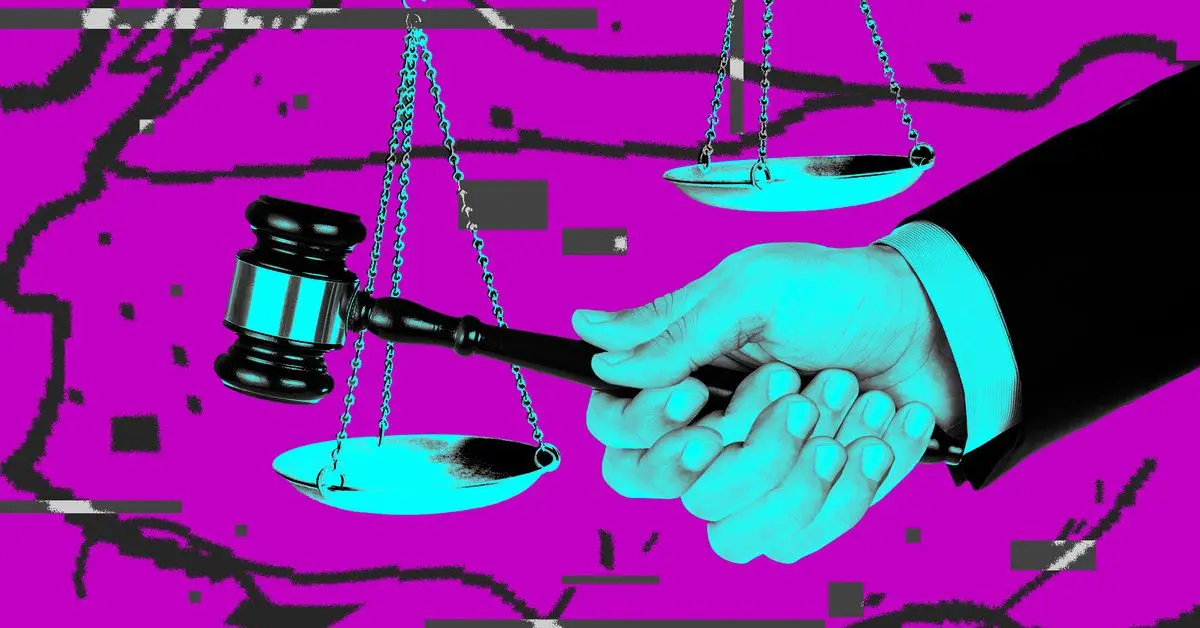A bipartisan group of senators introduced a new bill to make it easier to authenticate and detect artificial intelligence-generated content and protect journalists and artists from having their work gobbled up by AI models without their permission.
The Content Origin Protection and Integrity from Edited and Deepfaked Media Act (COPIED Act) would direct the National Institute of Standards and Technology (NIST) to create standards and guidelines that help prove the origin of content and detect synthetic content, like through watermarking. It also directs the agency to create security measures to prevent tampering and requires AI tools for creative or journalistic content to let users attach information about their origin and prohibit that information from being removed. Under the bill, such content also could not be used to train AI models.
Content owners, including broadcasters, artists, and newspapers, could sue companies they believe used their materials without permission or tampered with authentication markers. State attorneys general and the Federal Trade Commission could also enforce the bill, which its backers say prohibits anyone from “removing, disabling, or tampering with content provenance information” outside of an exception for some security research purposes.
(A copy of the bill is in he article, here is the important part imo:
Prohibits the use of “covered content” (digital representations of copyrighted works) with content provenance to either train an AI- /algorithm-based system or create synthetic content without the express, informed consent and adherence to the terms of use of such content, including compensation)



That is not at all what takes place with A.I.
An A.I. doesn’t “learn” like a human does. It aggregates multiple chunks from multiple sources. It’s just really really tiny chunks so it’s hard to tell sometimes.
That’s why you can ask two AI’s to write a story based on the same prompt and some of their lines will be exactly the same. Because it’s not taking inspiration from, it’s literally copying bits and pieces of other works and it happens that they both chose that particular bit.
If you do that when writing a paper in university it’s called plagerism.
Get the fuck out of here with your “A.I. takes inspiration…” it copies nothing more. It doesn’t add anything new to the sum total of the creative zeitgeist because it’s just remixes of things that already exist.
So it does do more than copying? Because as you said - it remixes.
It sounds like the line you’re trying to draw is not only arbitrary, but you yourself can’t even stick with it for more than one sentence.
Everything new is some unique combination of things that already exist, the elements it draws from are called sources and influences, and rules according to which they’re remixed are called techniques/structures e.g. most movies are three acts, and many feature specific techniques like J-cuts.
Heck even re-arranging elements of just one thing is a unique and different thing, or is your favourite song and a remix of it literally the same? Or does the remix not have artistic value, even though someone out there probably likes the remix, but not the original?
I think your confusion stems from the fact you’re a top shelf, grade-A Moron.
You’re an organic, locally sourced and ethically produced idiot, and you need to learn how basic ML works, what “new” is, and glance at some basic epistemology and metaphysics before you lead us to ruin because you don’t even understand what “new” entails, before your reactionary rhetoric leads us all down straight to cyberpunk dystopias.
Damn, attack the argument, not the person, homie.
Yeah, sorry
Consider youtube poop, Im serious. Everyclip in them is sourced from preexisting audio and video, and mixed or distorted in a comedic format. You could make an AI to make youtube poops using those same clips and other “poops” as training data. What it outputs might be of lower quality, but in a technical sense it would be made in an identical fashion. And, to the chagrin of Disney, Nintendo, and Viacom, these are considered legally distinct entities; because I dont watch Frying Nemo in place of Finding Nemo. So why would it be any different when an AI makes it?
You just reiterate what other anti-ML extremists have said like a sad little parrot. No, LLMs don’t just copy. They network information and associations and can output entirely new combinations of them. To do this, they make use of neural networks, which are computational concepts analogous to the way your brain works. If, according to you, LLMs just copy, then that’s all that you do as well.